Comprehensive Review of Axis Plates in Kiteboarding
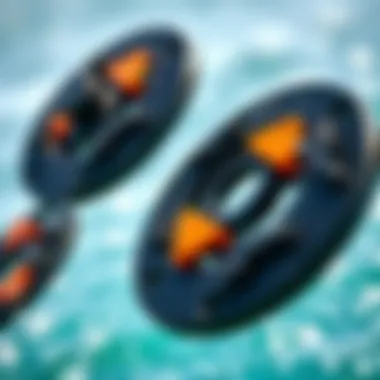
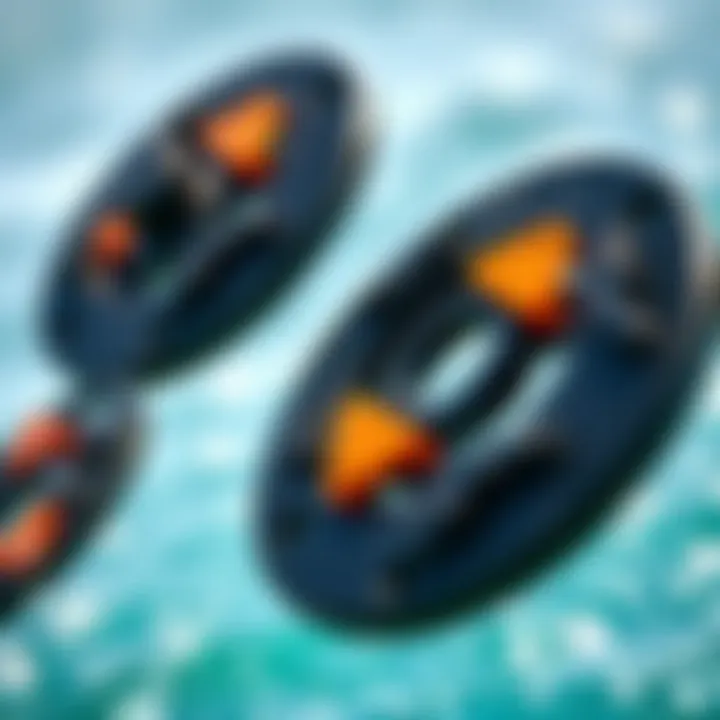
Intro
In the vibrant world of kiteboarding, the right gear can make or break your experience. Among all the equipment, Axis plates have carved out a reputation for their performance and reliability. With a keen focus on both user experiences and performance evaluations, this article aims to dissect the nuances of Axis plates, offering a detailed perspective for both novices and seasoned veterans of the water.
Kiteboarding is not just a sport; it is an adventure that combines skill, daring, and an intimate connection to nature. For those looking to enhance their setups, understanding the intricacies of specific components, like the plates, becomes essential. As we delve into the particulars, we will explore the essential gear, advanced options, techniques, safety practices, and much more to enrich your kiteboarding escapades.
Our comprehensive exploration will also shed light on installation tips, maintenance practices, and how Axis plates stack up against their competitors. Whether you are just starting out or you’ve been harnessing the winds for years, this guide will equip you with insights to elevate your kiteboarding performance.
Let's navigate through the essential gear you need, starting with the foundations.
Prolusion to Axis Plates
Understanding Axis Plates is essential for anyone diving into the world of kiteboarding. They play a pivotal role in one's performance on the water. Choosing the right gear can mean the difference between a thrilling ride or a frustrating outing. This article aims to break down what makes Axis Plates a strong contender in the market, looking into their design, materials, and user feedback.
Overview of Axis Brand
Axis as a brand is not just another name in kiteboarding gear; it has built a reputation, synonymous with quality and innovation. Founded with a clear vision to enhance the kiteboarding experience, Axis focuses on crafting plates that accommodate various riding styles. Their dedication to pushing the boundaries of performance is evident in their ongoing research and development efforts.
A considerable aspect that sets Axis trademark apart is their commitment to sustainability while maintaining high performance. They use eco-friendly materials in many of their products, appealing to environmentally conscious riders. This initiative not only speaks to the brand's responsibility but also reflects its understanding of modern kiteboarders' values.
Importance of Gear in Kiteboarding
In kiteboarding, equipment is the unsung hero. The right gear can amplify your skills, while the wrong choice can be limiting. Kiteboarding, as exhilarating as it is, demands a symbiotic relationship between the rider and their gear.
The importance of gear lies in its ability to adapt to various conditions. For instance, kite size, board stance, and most importantly, the type of plates used can significantly impact how a rider handles choppy waters or faces strong gusts. Users often remark on how the comfort of their feet in the straps can affect their performance to a remarkable degree. The right plates aid in achieving better speed, enhanced stability, and overall an improved experience, allowing riders to fully embrace what kiteboarding has to offer.
"Investing in quality gear often translates to a more rewarding ride and greater confidence on the water."
Understanding Axis Plates
In the realm of kiteboarding, the equipment carries as much weight as the skills of the rider. Understanding Axis Plates goes beyond the surface—it's about grasping how these components impact the overall kiteboarding experience. A rider's attachment to the board demands optimal interaction, mobility, and response. When we dive into the specifics of Axis Plates, we can appreciate their role in achieving control, stability, and performance in various conditions.
Design and Characteristics
Axis Plates are designed with precision. They are not just flat surfaces; their design encompasses the physics of motion. The curvature, width, and edge details play a crucial role in how a rider carves through waves or glides across flat water. The unique shape often allows for enhanced grip during turns and smoother landings after jumps. These design elements resonate well with the demands of the adventurous rider, creating a balance between agility and control. Each facet of the design speaks to a different riding style, whether it is freestyling or navigating choppy waters.
Material Specifications
When discussing performance, the materials used in manufacturing Axis Plates cannot be overlooked. Typically crafted from a blend of lightweight polymers and alloys, these materials ensure the plates are not just strong but also resistant to wear and tear from various elements. Some riders appreciate the addition of carbon fiber layers, which provide extra stiffness without adding significant weight. This last feature feels essential when you're barreling down the line and need every ounce of responsiveness.
While these materials contribute to durability, they also affect flexibility and weight distribution, both of which are pivotal in kite control. Using synthetic materials optimally means riders can enjoy the balance of strength and weight – crucial in ensuring long sessions without getting fatigued too quickly.
Sizes and Variations
Axis Plates come in various sizes, each tailored to cater to different rider profiles. Typically, manufacturers offer plates ranging from small to large, accommodating a spectrum of rider weights and styles. Lightweight riders often benefit from smaller plates that allow for quicker reactions, while larger plates provide stability for heavier riders.
In addition to size, there's also the variation in width and thickness, factors that dramatically influence performance. For example:
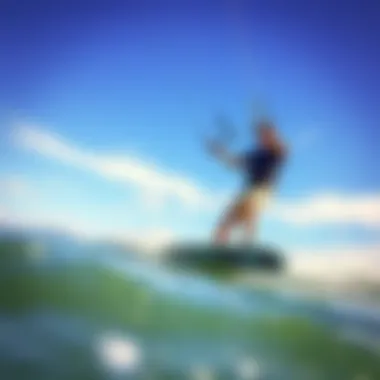
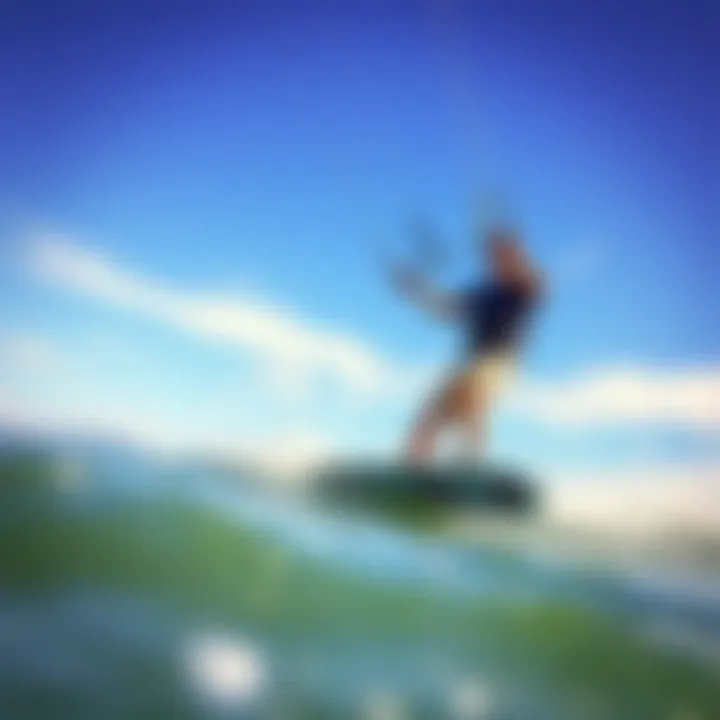
- Narrow Plates: Favor rapid turning and agility, suitable for trick-intensive riding.
- Wider Plates: Offer broader stability, beneficial in waves or while learning.
Choosing the correct size and variation isn’t as simple as picking your shoe size; it’s about understanding how these factors align with one’s own riding style. Optimal performance is often achieved through experimentation, so don’t hesitate to try different configurations to find what complements your rides best.
"To master the kiteboarding waves, know your gear inside out; it’s as much about the equipment as it is about the rider."
Performance Evaluation of Axis Plates
Evaluating the performance of Axis plates is crucial for anyone seriously involved in kiteboarding. Performance metrics can directly impact a rider's control, speed, and overall enjoyment on the water. By analyzing these plates, we uncover the physical characteristics that contribute to their effectiveness and how user experiences align with design specifications.
Speed and Agility
Speed is often a key selling point for kiteboarders. From the moment a rider hits the water, having the ability to accelerate quickly can make all the difference during those thrilling sessions. Axis plates are typically designed to enhance speed by optimizing their shape and material. Many users rave about how these plates help them slice through the water with efficiency, allowing for rapid acceleration even in less-than-ideal wind conditions.
Agility also plays a pivotal role in the performance of kiteboarding plates. It dictates how well a rider can maneuver around obstacles or adjust their path mid-flight. Feedback from riders suggests that Axis plates are particularly adept at maintaining agility during high-speed turns. This combination of speed and agility provides an exhilarating mix that almost feels instinctual. Users often describe it as being able to react seamlessly to the wind or water's changes, a testament to Axis plates' thoughtful engineering.
Stability and Control
When riding a kiteboard, stability is non-negotiable. A stable platform allows riders to handle gusts and shifts in wind without feeling overpowered or thrown off balance. The design of Axis plates aims to offer robust stability through their unique construction and material choice. Riders have noted that they feel more grounded, which is especially beneficial when trying new tricks or navigating tougher conditions.
Control is closely tied to stability. The synergy between the two can provide a rider with confidence, knowing they are less likely to wipe out during a challenging maneuver. Expert riders specifically praise how Axis plates maintain control at high speeds while providing enough feedback to understand the board's behavior.
"Every time I carve through a wave, I feel the board beneath me. That connection gives me the confidence to push my limits" – a seasoned kiteboarder remarks.
User Weight Considerations
User weight significantly influences how a kiteboard performs, including with Axis plates. These plates need to accommodate both lighter and heavier riders. For instance, lighter riders often express concern over maintaining speed and control, especially in lower winds. Axis’s design seems to cater to these nuances, using materials that flex ideally to support various weights without compromising responsiveness.
Heavier users, on the other hand, sometimes seek reassurance that their plates won’t buckle under pressure. Many reports from such riders indicate that Axis plates hold up well, offering consistent performance regardless of weight differences. It's worth noting that personal adjustments or settings may be needed; experimenting with board size or fin placement can also enhance performance.
In summary, the performance evaluation of Axis plates reveals a nuanced understanding of how critical elements like speed, control, and user-specific factors converge to shape the kiteboarding experience. This deep dive into performance ensures that both novices and veterans can select the gear that truly complements their riding style and aspirations.
User Experiences with Axis Plates
User experiences play a pivotal role in evaluating kiteboarding gear, particularly products like Axis plates. These firsthand accounts reveal not only the functionality of the plates under various conditions but also how they influence a rider's overall experience on the water. Essentially, user feedback serves as both a compass and a mirror, guiding potential buyers while reflecting the realities of performance.
When considering Axis plates, it's crucial to understand the diverse backgrounds of their users. The kiteboarding community encompasses everyone from weekend enthusiasts to seasoned veterans, all of whom interact with the plates in unique ways. This section delves into the distinct insights gathered from beginners, expert riders, as well as common criticisms and recommendations for improvement, offering a rounded perspective on the product's performance.
Beginner Perspectives
For newcomers to kiteboarding, Axis plates can be an intimidating yet exciting addition to their gear. Many beginners report feeling a mix of enthusiasm and trepidation when choosing their first plates. They often highlight the importance of stability and ease of use, identifying these factors as critical to boosting their confidence on the water.
"For me, the first ride was nerve-wracking, but my Axis plates made me feel safer. They helped me focus on learning instead of worrying about falling too much.”
New users also appreciate the specific feedback provided by Axis plates. The learning curve can be steep in kiteboarding, and new riders often find that the responsiveness of the plates offers crucial feedback, allowing them to adjust their technique as they go. Their reviews tend to emphasize features like comfort and adjustability since even a slight error can lead to discomfort and demotivation.
Expert Rider Feedback
On the opposite end of the spectrum, experienced kiteboarders approach their feedback with a sharp and discerning eye. They often scrutinize subtle performance nuances that may go unnoticed by beginners. Expert riders tend to focus on aspects like speed, maneuverability, and more technical details like how well the plates handle during extreme conditions.

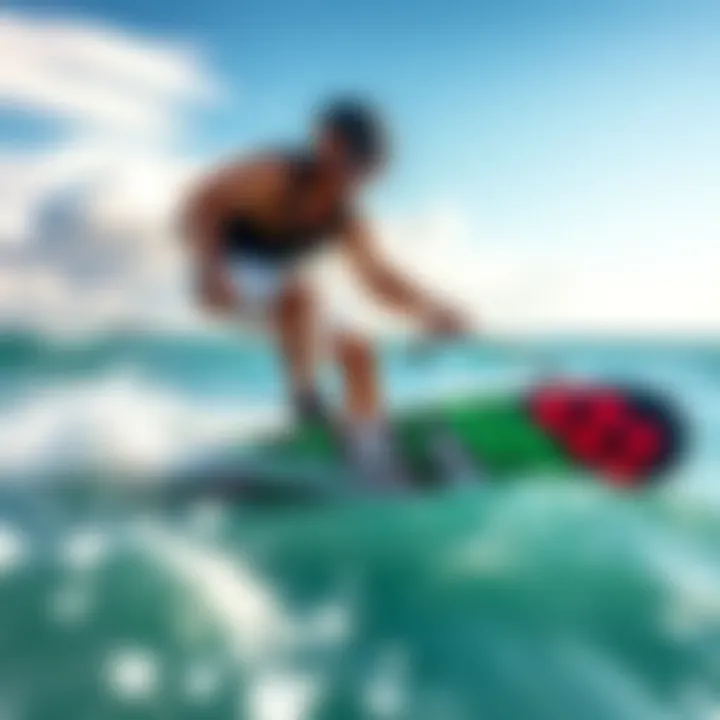
These riders frequently test their limits, so the robustness of Axis plates is a common point of discussion. Many pros commend Axis plates for their high-speed performance without sacrificing control, often attributing their overall riding improvements directly to the technology integrated into these plates. They tend to emphasize confidence at high speeds and in rough waters, which can make or break a session.
Common Complaints and Suggestions
Despite the positive experiences shared, no product is without its criticisms. Among the comments frequently noted by users, common issues include the weight of the plates and potential comfort discrepancies during prolonged use. Some report that certain models may feel heavier compared to competitors, which could impact performance, especially in long sessions.
Suggestions from users aimed at improvement often center around enhanced customization options and specific geometric designs to accommodate various riding styles. Riders have noted that a more inclusive range of sizes could better cater to the diverse preferences of kiteboarders.
To summarize, user experiences with Axis plates represent the breadth of the kiteboarding community. Newcomers cherish stability and comfort, while experts seek speed and control. Feedback, both positive and negative, underscores the ongoing conversation around performance and innovation in kiteboarding gear, fueling the evolution of products in line with user expectations.
Installation and Maintenance Tips
Installation and maintenance of Axis plates is a fundamental aspect of ensuring optimal performance while kiteboarding. Proper installation guarantees that the gear operates as designed, directly influencing factors like speed, control, and overall enjoyment on the water. On the other hand, regular maintenance can extend the life of your plates significantly, allowing kiteboarders to maximize their investment. Understanding the nuances of these processes will lead to a satisfying and safer riding experience.
Installation Guidelines
Getting the installation right can make or break your kiteboarding experience. Here are some key steps to ensure a smooth setup:
- Read the Manual: Always start by reviewing the manufacturer’s manual that comes with the Axis plates. Although many products appear straightforward, each model has specific instructions that cater to its design.
- Tool Check: Have the right tools on hand. Typically, you’ll need a screwdriver, wrench, or even a torque tool, depending on the plate design. This way, you’ll save yourself from fumbling around or making emergency runs to the hardware store.
- Secure Fitting: When attaching the plates to your board, ensure that the screws are tightened but not over-tightened. Over-tightening can lead to cracks or damage in the board or plates, which is something no rider wants to deal with.
- Double-Check Alignment: Take a moment to double-check the alignment. Off-center plates can throw off your balance on the board and lead to an awkward ride.
- Test Before Riding: Lastly, before heading out to the water, it’s worthwhile to do a small on-land test. Stand on your board and check the fit and feel of the plates. If anything feels off, don't hesitate to make adjustments.
Maintenance Practices
Maintenance is the unsung hero of performance gear—it often gets overlooked, yet it’s vital for long-term usability. Here are several practices that kiteboarders should adhere to:
- Regular Cleaning: After each session, rinse your plates with fresh water to remove salt and sand, as these can cause corrosion over time. Salt is effective at ruining anything metal, so don’t skip this step.
- Visual Inspections: Frequently inspect your plates for any visible signs of wear or damage. Look for cracks, chips, or any deformation in the material. Early detection of wear can often prevent bigger issues down the line.
- Lubrication: Depending on the design of your plates, applying a light lubricant like silicone spray can help keep moving parts functioning smoothly. Just be cautious—too much lubricant can attract dirt.
- Storage: When not in use, store your plates in a cool, dry place. Avoid leaving them in direct sunlight or damp areas, as humidity can lead to deterioration.
Proper installation and consistent maintenance of your Axis plates are not just optional—they're essential to enjoying a hassle-free kiteboarding experience and enhancing the longevity of your gear.
Make it a habit to follow these installation and maintenance tips, and you’ll likely notice more stability and performance on the water, allowing you to focus on what you love most: riding.
Comparative Analysis with Other Plate Brands
In the world of kiteboarding, selecting the right gear can significantly impact performance and overall enjoyment. It’s not just about picking a fancy brand or the most popular option; understanding how one product measures up against another can provide deeper insights into what’s best for individual needs. This article explores how Axis plates compare to other popular brands, emphasizing the importance of such comparisons. When evaluating kiteboarding gear, especially plates, one must consider durability, speed, control, and user satisfaction.
Axis vs. Brand
In examining Axis plates under the lens of Brand X, a competitor known for its innovative materials and design, several key differences emerge.
Design Philosophy: Axis plates have a streamlined design that emphasizes lightweight construction. In comparison, Brand X integrates heavier materials, which can lead to increased stability but may sacrifice agility. Riders with a preference for freestyle maneuvers often find that Axis provides the edge needed for quick transitions and aerial tricks.
User Feedback: Users consistently highlight that Axis plates allow for a more responsive ride. On forums like Reddit, kiteboarders mention the thrill of quick turns and rapid response when powered by the wind. Brand X’s users, however, appreciate its durability on challenging water conditions but sometimes report a delayed responsiveness during sharp turns.
"Choosing between Axis and Brand X is like picking between speed and stability. Each plate offers a unique ride based on what you're looking for in the wave."
Maintenance Costs: One often overlooked aspect is maintenance. Axis plates are generally easier to maintain, requiring only periodic checks for wear and tear. In contrast, Brand X demands a more involved maintenance routine, potentially leading to higher long-term costs.
Axis vs. Brand Y
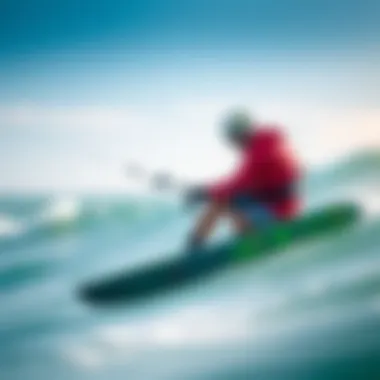
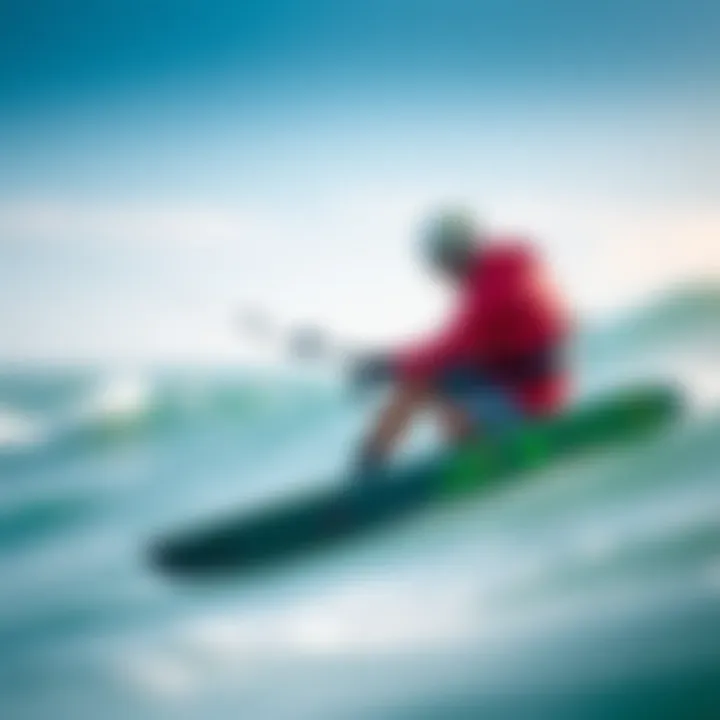
Switching gears to Brand Y, known for its emphasis on performance enhancement through technology, we see a different narrative unfolding.
Material Composition: Axis utilizes high-grade composites that offer a balance between flexibility and sturdiness. Brand Y, on the other hand, leans heavily on advanced tech materials that promise increased performance but at a premium price. The result can be a mixed bag; while some riders swear by the enhanced performance of Brand Y, others feel the extra cost doesn’t justify the marginal gains.
Weight Considerations: When it comes to weight, Axis has the upper hand, making it more appealing for youthful riders who value agility. Brand Y plates tend to be heavier, which could be ideal for some advanced riders who may appreciate the stability it brings, particularly in rougher waters.
User Experience: Anecdotal reports show a split in user satisfaction. Riders prefering Axis plates often emphasize the joy of their lightweight design, which can lead to longer sessions on the water without fatigue. Conversely, Brand Y enthusiasts are likely to discuss the precision offered in challenging kiteboarding scenarios, pointing out that it lends them an additional level of confidence against the elements.
In summary, the comparative analysis of Axis plates against Brand X and Brand Y highlights the vital nature of informed decision-making in kiteboarding gear. Each brand serves its own niche within the sport, but understanding their strengths and weaknesses enables riders to choose a plate that best aligns with their riding style and goals.
Cost-Benefit Analysis
When it comes to kiteboarding gear, weighing the cost against the benefits is crucial. The world of kiteboarding is exhilarating but can also be a financial undertaking. Selecting the right equipment, like Axis plates, means not only considering the price tag but also evaluating how well these plates can enhance your riding experience.
Price Range Discussion
The price of Axis plates spans a spectrum, catering to different budgets and preferences. Typically, some models might hover around the mid-range of, say, $300 to $500, while premium versions could set you back even further. Here’s a breakdown to give you a clearer picture:
- Entry-Level Plates: Generally priced around $300, these models offer good functionality without breaking the bank. They feature durable materials and reliable performance but might lack certain advanced features.
- Mid-Range Plates: Expect to pay between $400 to $600 for this category. These plates often come with improved construction, better materials, and added design features aimed at enhancing stability and control in diverse conditions.
- High-End Plates: Prices can easily exceed $800 for top-of-the-range models. At this level, you get cutting-edge design, lighter materials, and specialized features that can greatly improve your agility and responsiveness on the water.
When assessing these price points, remember to consider the impact of saving a few dollars versus the potential benefits of a higher-end product. Sometimes, the costlier option can lead to better longevity and performance, which might save you money in the long run.
Value for Money Assessment
When evaluating whether Axis plates deliver good value for money, it's essential to step back and look at more than just the initial cost. Factors like durability, performance, and rider feedback come into play.
- Durability: Investing in high-quality plates often translates to more extended service. Those built from new-age composites or high-grade aluminum resist wear and tear better than cheaper alternatives. This durability can play a vital role in maintaining performance over time.
- Performance: User experiences highlight that the right gear enhances performance. Riders often report improved speed and better control after switching to Axis plates. If a higher price tag ensures these benefits, it's worth considering that aspect, especially for enthusiastic riders aiming for performance optimization.
- Rider Feedback: Many kiteboarders share their reviews in online forums like Reddit. Consistently positive feedback regarding responsiveness and comfort can sway the decision. It's advisable for potential buyers to dive into discussions to gather insights from fellow adventurers.
In summary, while the initial price may seem steep, the potential for enhanced performance and durability could justify the investment. Ultimately, determining whether Axis plates offer good value relies on personal preferences and how serious you are about maximizing your kiteboarding adventures.
Final Thoughts
When considering the myriad of options available in the kiteboarding market, it’s crucial to wrap things up with a clear perspective on Axis plates. This section offers a delicate balancing act, addressing critical elements like who benefits most from these plates and where the future of kiteboarding gear seems to be heading.
Who Should Consider Axis Plates?
Not every kiteboarder is cut from the same cloth. Whether you're a novice just dipping your toes into the sea or a seasoned pro carving it up on the waves, understanding where Axis plates fit into the mix is vital. Beginners might find them particularly appealing due to their user-friendly design and stability, making learning smoother without compromising performance. On the flip side, experienced riders seeking enhanced control and precision will certainly appreciate the advanced features and adaptability that Axis offers.
For those in between, you can think of this gear as a bridge — it can elevate your skills as you transition from simply riding to confidently pushing your limits. Overall, anyone aiming to improve their kiteboarding experience, from recreational participants to competitive athletes, should give serious consideration to Axis plates.
Future Trends in Kiteboarding Gear
As we peer into the crystal ball of kiteboarding gear, several trends are making waves. The focus is steadily shifting towards sustainability, with manufacturers looking into eco-friendly materials without sacrificing performance. Likewise, advancements in technology mean lighter and stronger builds, which enhances not just speed but overall user experience.
Key trends to look out for include:
- Smart Tech Integration: Devices that log rides, analyze performance, and provide real-time feedback are becoming more prevalent.
- Customization: Riders want gear that reflects their style. Expect to see more brands offering customizable products that allow personal touches.
- Focus on Inclusivity: The gear is evolving to accommodate a broader range of body types and skill levels, ensuring everyone can enjoy the rush of kiteboarding.
As these developments unfold, it’s clear that the evolution of kiteboarding gear, including Axis plates, will guide enthusiasts towards richer experiences.
In closing, the right board and plate combination can significantly enhance your riding experience. For kiteboarders of all stripes, understanding Axis plates as a pivotal piece of your gear can make all the difference between an average day on the water and a truly exhilarating adventure. > "Selecting the right equipment is essential; it can transform not just your performance, but your enjoyment in the ocean."
Wrapping it Up
Ultimately, the decision to invest in Axis plates boils down to personal preference, riding style, and budget. But as the kiteboarding scene continues to evolve, keeping pace with these changes will be paramount for any rider committed to improving their craft.



